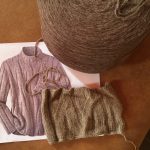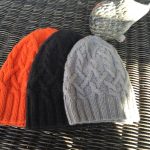 If you look at fibers under a powerful microscope, you will see that they are covered with tiny scales – rather like the scales of a fish. You can experience this for yourself by running your fingers up and down your hair. Scales play an important role in how protein fibers look, feel, and behave. First, they act as miniature hooks that help hold fibers together to form a strong, durable yarn.
If you look at fibers under a powerful microscope, you will see that they are covered with tiny scales – rather like the scales of a fish. You can experience this for yourself by running your fingers up and down your hair. Scales play an important role in how protein fibers look, feel, and behave. First, they act as miniature hooks that help hold fibers together to form a strong, durable yarn.
Scales give fibers something to hold on to during the spinning process. At the same time, they also provide a microscopic buffer between fibers, making them enmeshed yet distinctly separate. Scales are also the reason why a wool sweater, when machine-washed in hot water, will emerge a shrunken, felted mess.
When it comes to choosing yarn for your knitting or crochet projects, the quality of the fibers is an important consideration. The quality of fibers can affect the texture, strength, and durability of the finished project, as well as its overall appearance. Factors such as the animal’s diet, living conditions, and breed can also affect the quality of fibers. For example, Merino wool is known for its softness and fine fibers, while Shetland wool is known for its durability and warmth.
Ultimately, the quality of the fibers you choose will depend on the intended use of the finished project, as well as your personal preferences for texture, color, and feel. It’s important to choose high-quality fibers that will create a durable and beautiful finished project that you will enjoy for years to come.

















